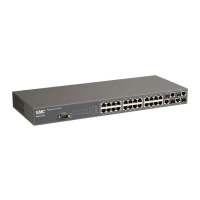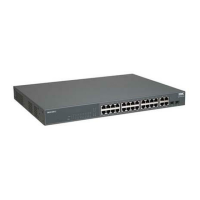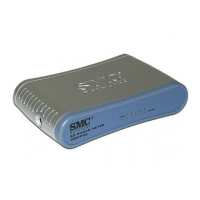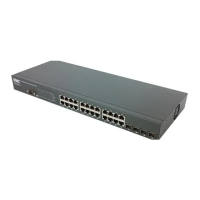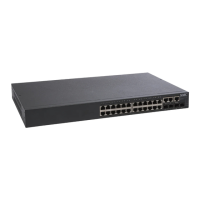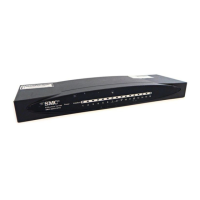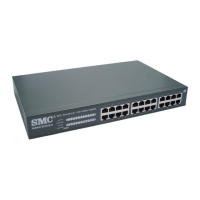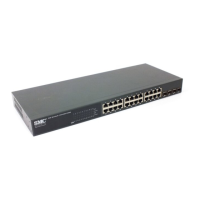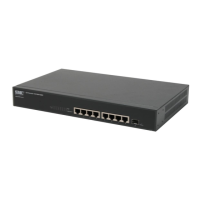DHCP C
OMMANDS
35-10
in the client request (i.e., the request was not forwarded by a relay
server), the switch searches for a network pool matching the interface
through which the client request was received. It then searches for a
manually configured host address that falls within the matching
network pool. If no manually configured host address is found, it
assigns an address from the matching network address pool. However,
if no matching address pool is found the request is ignored.
• This command is valid for DHCP network address pools only. If the
mask is not specified, the class A, B, or C natural mask is used (see
page 4-253). The DHCP server assumes that all host addresses are
available. You can exclude subsets of the address space by using the ip
dhcp excluded-address command.
Example
default-router
This command specifies default routers for a DHCP pool. Use the no
form to remove the default routers.
Syntax
default-router address1 [address2]
no default-router
• address1 - Specifies the IP address of the primary router.
• address2 - Specifies the IP address of an alternate router.
Default Setting
None
Command Mode
DHCP Pool Configuration
Usage Guidelines
The IP address of the router should be on the same subnet as the
client. You can specify up to two routers. Routers are listed in order of
preference (starting with address1 as the most preferred router).
Console(config-dhcp)#network 10.1.0.0 255.255.255.0
Console(config-dhcp)#
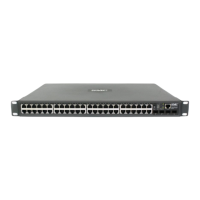
